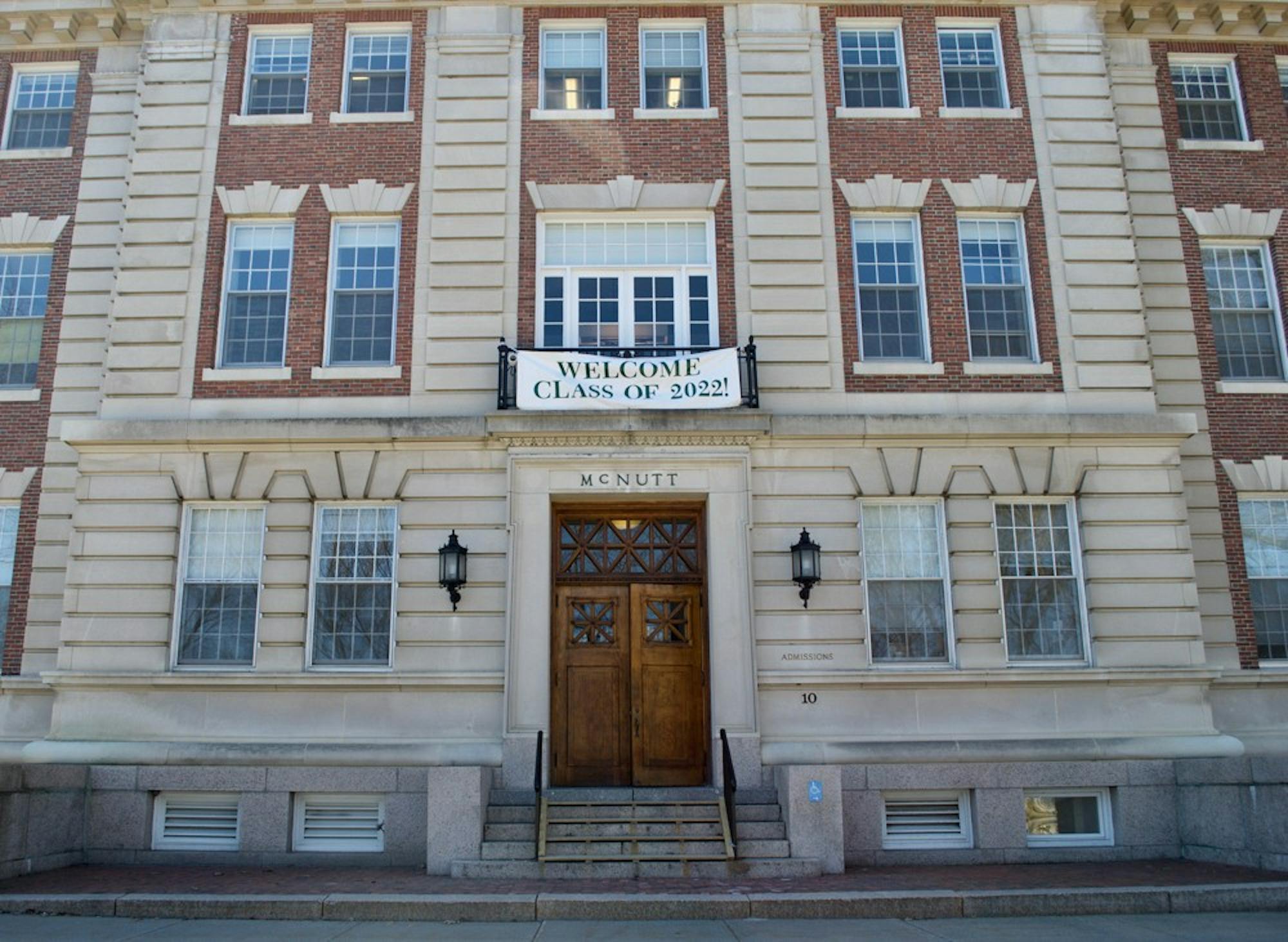Dartmouth offered 1,925 students admission to the Class of 2022, accepting a record-low 8.7 percent of the 22,033 students who applied this cycle. The Class of 2022 represents the lowest number of accepted students Dartmouth has seen since the early 1990s, selected from the largest applicant pool of the last five years. The acceptance rate fell from last year’s 10.4 percent for the Class of 2021 and beat the previous record-low of 9.8 percent for the Class of 2016.
Vice provost for enrollment and dean of admissions and financial aid Lee Coffin said the low acceptance rate was due in part to the increase in applicants and to accommodate expectations of a high yield rate.
“Every year is predicated on how many applications we receive, and the 10 percent increase from last year to this year set the story in motion,” Coffin said. “Quite literally, 2,000 more people applied.”
He added that he expects the yield rate for the Class of 2022 to be similar to the record-high 60 percent yield rate for the Class of 2021.
“There was consistency between the Class of 2021 and the Class of 2022 in terms of how we recruited, where we went, how we read [applications] and how the committee process played out,” Coffin said. “I’m pretty confident that last year as a starting point makes sense.”
Among accepted students, 97 percent are in the top 10 percent of their high school class, and mean SAT and ACT scores are 1497 and 33, respectively. Fifteen percent of the admitted students are first-generation college students, 11 percent are foreign citizens and nine percent are the children of alumni. Half of the accepted U.S. citizens and permanent residents identify as persons of color. More than 60 percent of admitted students applied for need-based financial aid. These statistics are similar to the ones seen last year for the Class of 2021.
According to the College, the Class of 2022 comprises students from all 50 states, Washington, D.C., American Samoa, Guam, Puerto Rico and the Mariana Islands. Internationally, 65 countries are represented, with the most students hailing from Brazil, Canada, China, India and the United Kingdom.
Coffin added that the College has expanded last year’s focused effort to increase the institution’s presence abroad during this admissions cycle.
“We spent the last 18 months stretching beyond Dartmouth’s normal recruitment footprints,” he said. “Colleges like Dartmouth need to be present in parts of the world where familiarity with a residential liberal arts experience is not a norm.”
The impact of the international recruitment efforts can be seen in the increase in applications from countries such as Brazil, Coffin said.
“It was exciting seeing growth in all the places we were hoping to see more traction for Dartmouth,” Coffin said. “What we’re seeing is this connection between the College and our applicants, and more clarity about what it is that we represent.”
Arya Kadakia ’22 from Mumbai, India said he liked Dartmouth because he felt the school would challenge him to grow as a person and as a student in an environment different from his current high school in Mumbai.
“[Dartmouth] offer[s] me more than just academics, which I’ve always been focused on,” Kadakia said. “It offer[s] me the chance to grow in the intimate environment of a liberal arts college, which is quite different from my high school.”
Living closer to the College, Jasper Meyer ’22 from Lyme, New Hampshire, who currently attends Hanover High School, said that although he has always been familiar with Dartmouth as a school, he is most excited for the opportunity to meet his future classmates.
“Even though I’m not moving very far, I’m excited to meet and interact with the different perspectives of my future class and classmates, a diverse subset of all 50 states and several countries,” Meyer said.
Among the Ivy League, Dartmouth’s acceptance rate is the second highest. Six other schools in the Ivy League also saw record-low acceptance rates this year. Rounded to the tenth, Brown University accepted 7.2 percent of its applicants, Columbia University admitted 5.5 percent, Cornell University admitted 10.3 percent, Harvard University accepted 4.6 percent, Princeton University accepted 5.5 percent and the University of Pennsylvania admitted 8.4 percent. Yale University admitted 6.3 percent of its applicants — while not a record-low, this rate is lower than what Yale saw last year.
Coffin said that other schools in the Ivy League are also making efforts to increase their outreach.
“The trend lines are shared,” Coffin said. “We’re not alone in seeing growth and selectivity tighten. The other [Ivy League institutions], like Dartmouth, are present in new and emerging parts of the world, telling our stories and inviting students to consider us.”
Rachel is a '21 from Plainsboro, NJ and is currently serving as the editor-in-chief of the 177th directorate. She is pursuing a double major in economics and philosophy.




